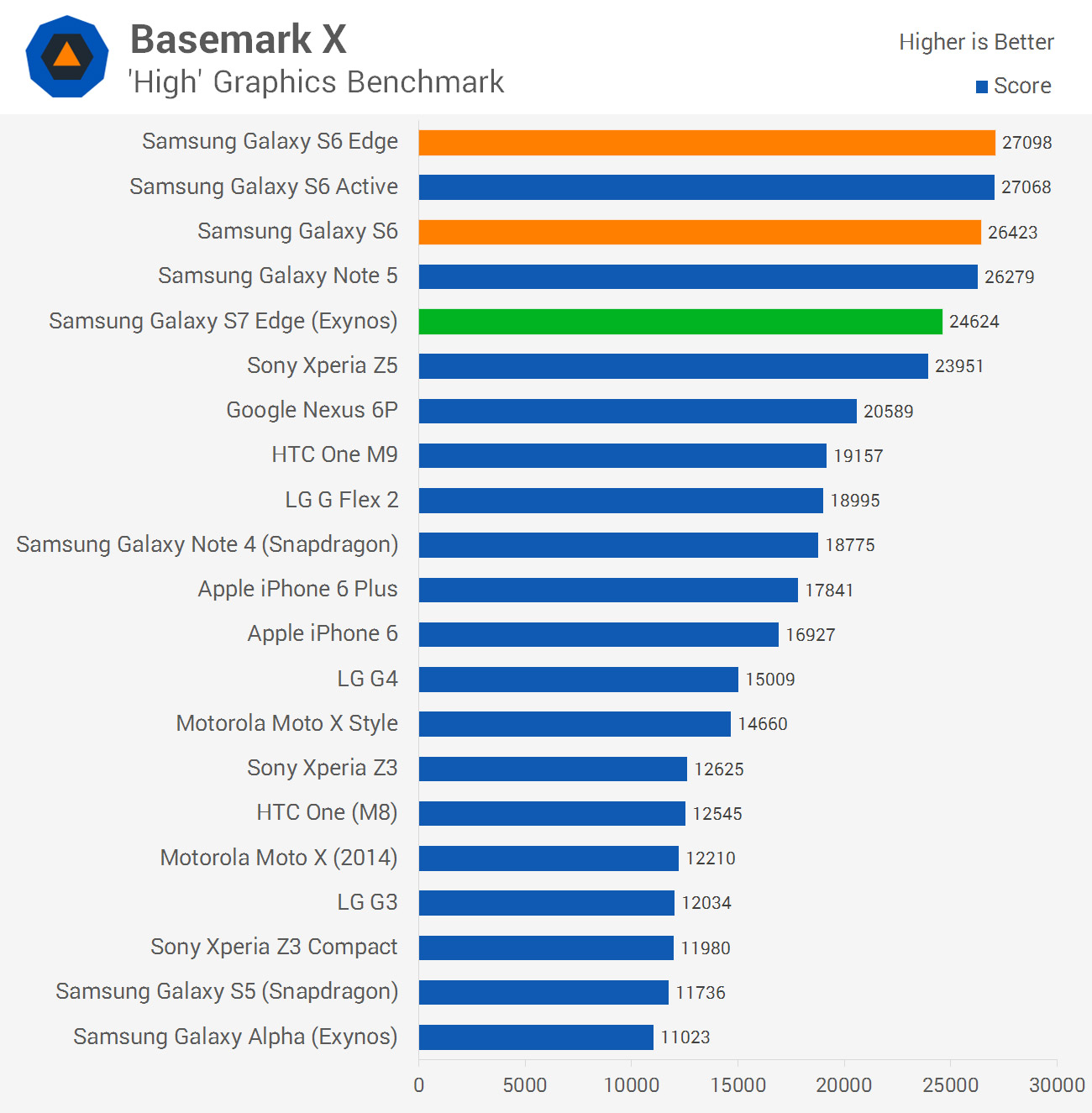Samsung Galaxy S7 Edge Review > GPU, Throttling, and Storage Performance - whitehavager
GPU, Throttling, and Storage Performance
Thanks to a beefier GPU, the Wandflower S7 Edge is a dandy gaming gimmick, having more than decent major power to support Android play at 1440p. I played a range of intensive titles on the Galaxy S7, including Vainglory and Oddworld: Stranger's Anger, and performance was typically excellent at utmost graphics settings. On early handsets it wasn't always possible to get a quiet experience in these games, so this a definite step to the fore.






In GPU-limited benchmarks, we're look a performance gain of around 43% compared to the Exynos 7420's Mali-T760MP8. The contribute is smaller when comparing the Mali-T880MP12 to the Snapdragon 810's Adreno 430, at just 32% when looking at the Galaxy S7 Edge versus the Google Nexus 6P (also a 1440p device). Nonetheless, the gains on the GPU side are nonetheless beautiful decent in both situations, and serve mitigate some performance issues in last-terminate games running at 1440p.
Upgrading from a Galaxy S5? Expect to see GPU gains of around 90% moving from the Snapdragon 801, and more than 150% moving from the Exynos 5422 variant.

The Extragalactic nebula S7 Edge doesn't surprise in its sustained performance, throttling modestly after around 10-12 minutes in a GPU lowering workload. Victimization GFXBench's battery test, the Galaxy S7 Edge unbroken its carrying into action close to its peak level for almost 13 iterations of the 55 intermediate-long benchmark, earlier steadily falling to around half the peak performance after 25 iterations.
While the S7 Edge does throttle aggressively later 20 or so minutes, recording performance 42% let down after this period, its semipermanent execution is calm down around the Sami, if not higher, than many a other Mechanical man devices connected the market. Considering bill performance is first-class, and the S7 Edge can sustain this for longer than the Galaxy S6, I'd say that's a make headway.
Happening the strange hand, the S7 Edge does vex identical hot while playing intensive 3D games, which explains why a heatpipe was necessary to frivol away heat away from the SoC. The skin temperature on the backrest of the device reached every bit high American Samoa 41°C during free burning lading, and the metal edges crapper get quite toasty. Samsung has clearly prioritized performance at the expense of heat Here.


The S7 Edge's memory performance is similar to the Galaxy S6, which means we're still seeing very dear transfer speeds. Sequential read performance has improved, at the expense of slight reductions in other areas, though I don't expect this will have a significant impact on general day-to-Clarence Shepard Day Jr. usage.
Source: https://www.techspot.com/review/1147-samsung-galaxy-s7-edge/page5.html
Posted by: whitehavager.blogspot.com


0 Response to "Samsung Galaxy S7 Edge Review > GPU, Throttling, and Storage Performance - whitehavager"
Post a Comment